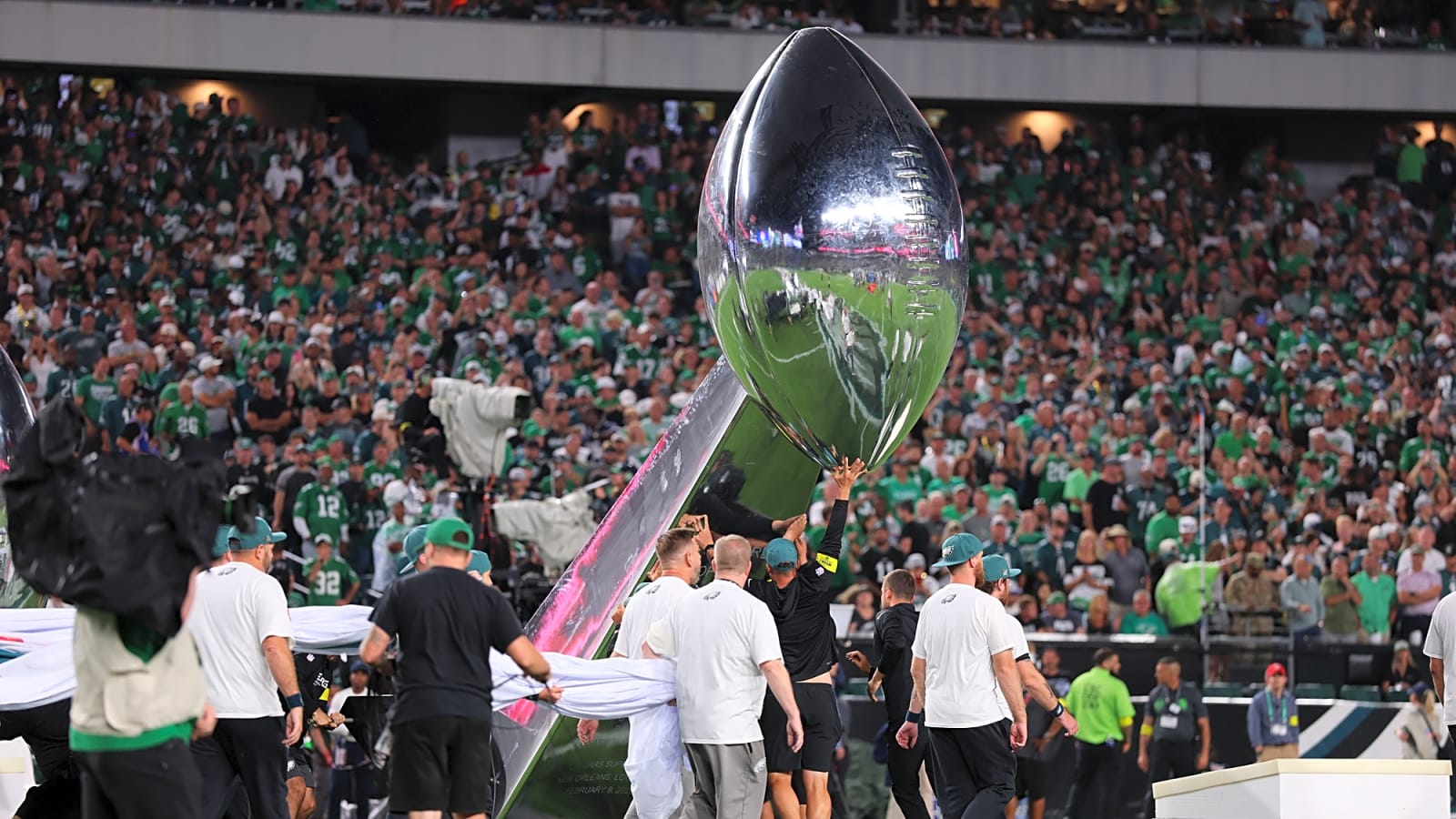
Every February, as confetti rains down and the Lombardi Trophy is hoisted, football fans everywhere ask the same question: What truly wins championships in the NFL? Is it the star quarterback, the stout defense, the mastermind coach, or some perfect blend of all three?
The NFL’s greatest teams, from the dynastic Steelers and Patriots to the modern Chiefs, share certain underlying traits—patterns that go deeper than highlight reels or box scores. The secret formula for championship football isn’t just about talent but execution, adaptability, and timing. Let’s break down the X’s and O’s of what wins NFL titles.
1. The Quarterback: Command and Composure Under Pressure
No position in sports carries more weight than the NFL quarterback. History proves that elite quarterback play doesn’t guarantee a Super Bowl, but it sure increases your odds. Whether it’s Tom Brady orchestrating late-game drives, Joe Montana staying calm under pressure, or Patrick Mahomes turning broken plays into brilliance, championship teams almost always have a quarterback who thrives when it matters most.
The key isn’t just arm strength or stats—leadership and decision-making. Great quarterbacks understand situational football: when to take a risk, when to check down, and when to trust their defense. In the playoffs, where every possession counts, composure becomes a weapon.
Look at Brady’s 28–3 comeback against Atlanta, or Eli Manning’s improbable escapes and pinpoint throws against the Patriots’ dynasty. These aren’t just physical feats—they’re mental masterclasses. You can find countless sports images or stock photos showing quarterbacks standing tall in the pocket, eyes scanning the field, embodying poise and precision. That image alone represents what every championship team strives for: calm amid chaos.
2. The Trenches: Where Games Are Really Won
For all the glamour of touchdowns and passing stats, the real battles in football happen where cameras rarely linger—the line of scrimmage. Offensive and defensive lines are the backbone of every championship team.
Protecting the quarterback and controlling the run game set the tone on offense. Teams like the 1990s Dallas Cowboys and the early-2000s Patriots dominated thanks to disciplined, physical offensive lines that imposed their will. Defensively, pressure changes everything. A great defensive front can neutralize even elite quarterbacks.
Think of the 2007 New York Giants. Their pass rush—anchored by Michael Strahan, Justin Tuck, and Osi Umenyiora—disrupted Tom Brady’s perfect-season Patriots, proving that pressure can beat precision. Or the 2013 Seattle Seahawks, whose “Legion of Boom” secondary got plenty of credit, but the relentless defensive line made Peyton Manning’s record-setting offense crumble.
For decades, coaches have said that championships are won in the trenches. Every great dynasty, from the Steelers’ Steel Curtain to the modern Chiefs, has understood that games are built from the inside out.
3. A Defense That Bends—but Rarely Breaks
While “defense wins championships” might sound cliché, there’s a reason it’s stood the test of time. Even in today’s offense-driven NFL, defense remains the equalizer.
A championship defense doesn’t have to be statistically dominant—it just has to make key plays when it matters most. Turnovers, third-down stops, red-zone efficiency: those are the real difference-makers. The 2000 Baltimore Ravens, led by Ray Lewis, didn’t just stop teams; they suffocated them. The 1985 Chicago Bears revolutionized defense with their 46 scheme, creating chaos and confusion on every snap.
Even modern examples like the 2021 Los Angeles Rams show the same principle in action. Aaron Donald’s pressure and Von Miller’s leadership created game-changing moments when the Super Bowl was on the line.
Championship defenses have personality. They play fast, communicate well, and thrive under pressure. You can see that confidence in sideline photos, when defenders celebrate together—faces lit up, fists raised, an unspoken understanding that they’ve taken control of the game. Those images, often captured in sports galleries and professional stock photos, perfectly embody the essence of team defense: unity through intensity.
4. Coaching: Strategy, Adaptability, and Belief
Behind every Super Bowl champion stands a great coach—or at least a great coaching plan. From Vince Lombardi’s disciplined fundamentals to Bill Belichick’s situational genius, coaching is often the difference between good and legendary.
What separates elite coaches isn’t just X’s and O’s; it’s adaptability. Championship coaches don’t force players to fit their system—they build systems around their players. Andy Reid’s offensive creativity with Patrick Mahomes, or Sean McVay’s motion-based schemes in Los Angeles, demonstrates how innovation drives success.
But just as important is culture. Lombardi, Chuck Noll, Bill Walsh, and Belichick all shared one defining trait: they made their teams believe. They created environments where accountability and trust became as critical as play design.
Championship coaching is as psychological as it is tactical. It’s about adjusting in real time, keeping composure, and outsmarting the opposition when the stakes are highest.
5. Turnover Margin: The Hidden Stat of Champions
Look no further than turnover margin to find a consistent data point among Super Bowl winners. Teams that protect the football and force turnovers win at a staggering rate.
A single fumble or interception can swing momentum and decide legacies in playoff football, where possessions are limited. Great teams play disciplined football—they don’t beat themselves.
The 2018 New England Patriots, for example, weren’t statistically dominant in most categories, but they controlled the ball and made crucial defensive stops. Similarly, the 2013 Seahawks, the 2015 Broncos, and the 2019 Chiefs built their playoff success on turnover discipline.
It’s not glamorous, but it’s foundational. Every interception avoided, every forced fumble recovered, is a hidden championship play.
6. Depth and Durability: The War of Attrition
An NFL season is long, brutal, and unforgiving. Talent alone won’t survive it—depth and durability win over time. The best teams aren’t just great at the top; they’re strong from top to bottom.
Injuries happen. Rookies are thrust into starting roles. Unexpected heroes emerge. Championship teams are built to absorb adversity and keep moving forward. When the Philadelphia Eagles lost starting quarterback Carson Wentz late in the 2017 season, backup Nick Foles stepped in and led them to a Super Bowl victory—proof that depth matters as much as destiny.
The front office plays a huge role here, too. Teams that draft well, manage the salary cap wisely, and maintain roster balance have the endurance to outlast their rivals.
In football photography, some of the most iconic images aren’t of superstars—they’re of the unsung heroes: linemen battling in the trenches, special teamers making crucial tackles, backup players stepping into the spotlight. Those moments, often immortalized in sports and stock photos, remind us that championships are collective achievements.
7. Timing: Peaking When It Counts
Perhaps the most underrated factor in winning championships is timing. The best teams know how to peak at the right moment. You don’t have to be dominant all season—just in January and February.
The 2010 Green Bay Packers barely made the playoffs but caught fire behind Aaron Rodgers’ precision passing. The 2007 Giants snuck in as a wild card and took down the undefeated Patriots. Momentum is powerful, and great teams harness it like a wave.
Championship runs often feel like destiny, but they’re about preparation meeting opportunity. Coaches rest players strategically, quarterbacks sharpen their chemistry with receivers, and defenses gel into cohesive units just in time for the postseason.
8. The “It” Factor: Chemistry, Confidence, and Culture
You can’t measure it on a stat sheet, but every champion has it—the unspoken belief that they’re destined to win. Call it swagger, chemistry, or culture; it’s what binds great teams together.
Teams with chemistry trust one another completely. They celebrate together, fight for each other, and stay composed when adversity strikes. The 2013 Seahawks, 2001 Patriots, and 1990 Giants all had that intangible quality—teams that played as one heartbeat, not just as individuals.
Culture starts at the top and filters down. It’s seen in the locker room, in film sessions, and on the sideline when the game’s on the line. It’s the glue that turns talent into teamwork and opportunity into achievement.
The Blueprint for Glory
When you strip football down to its essence, championships come from balance—between offense and defense, talent and teamwork, structure and spontaneity. Every dynasty has found its unique formula, but they all share the same DNA: leadership, execution, discipline, and heart.
That’s the beauty of the NFL. Despite the complexity of schemes and strategies, the ultimate truth remains simple: the team that stays composed, controls the line of scrimmage, and seizes key moments wins.
From black-and-white photos of Vince Lombardi’s Packers hoisting the first Super Bowl trophy to modern high-resolution stock photos of Mahomes celebrating with confetti swirling around him, the imagery of NFL champions tells one timeless story—greatness is built, not born.
The X’s and O’s may evolve, but the foundation never changes. Championships are won by teams that master the fundamentals, adapt under pressure, and believe—deep down—that when the final whistle blows, they’ll be the ones standing tall.
More must-reads:
- 'MNF' takeaways: Stout defensive effort leads Chiefs to decisive win over Commanders
- Broncos star Patrick Surtain to miss time with pectoral injury
- The 'Active NFL receptions leaders' quiz
Breaking News
Trending News
Customize Your Newsletter
 +
+
Get the latest news and rumors, customized to your favorite sports and teams. Emailed daily. Always free!








